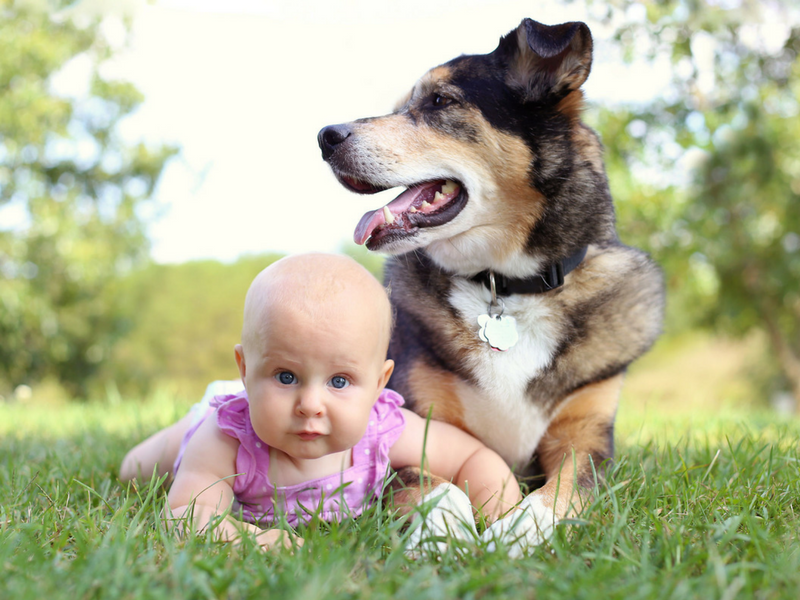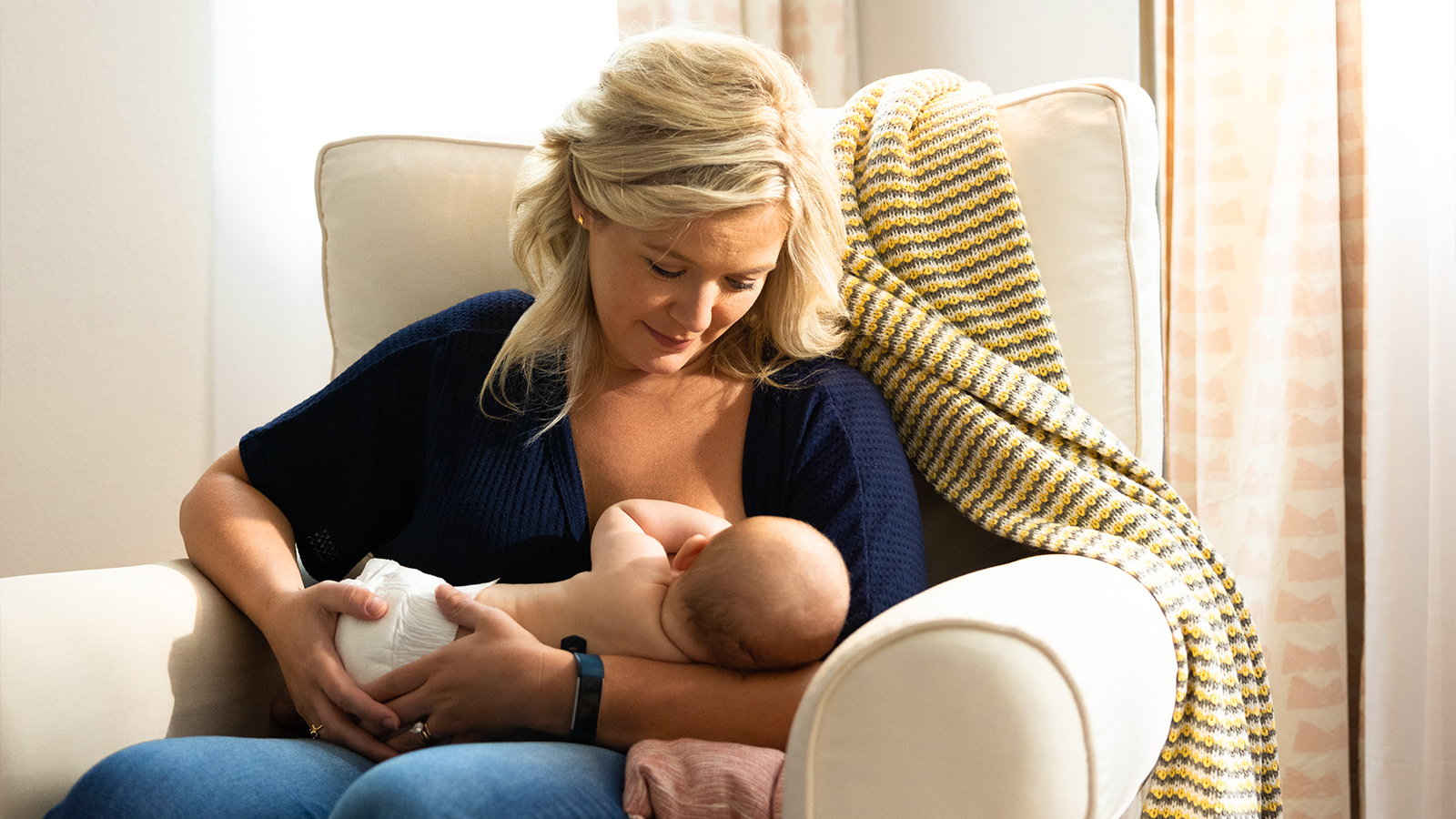With September being National Baby Safety Month, it’s a great time to teach the families you work with about introducing babies to pets. Below is important information about establishing the relationship between babies and pets, as well as general safety measures that should be taken.
Planning ahead
To help minimize potential issues, it’s important for parents to prepare their pet months before their baby moves in. For the most part, cats and dogs can be prepared for the arrival of a newborn the same way.
Some suggestions to give to parents include:
- Getting their pet used to baby-related noises
- Addressing any known training or behavior problems and enrolling their pet in a training class, if necessary
- Training their pet to remain calmly on the floor beside them until invited onto their lap
- Installing a removable baby gate if the baby’s room will be off-limits to their pet and getting their pet used to staying out of the nursery
Making the introductions
The following suggestions will help parents introduce their pet and baby easily and safely.
- Bring home an article of clothing the baby has worn or another baby item such as a blanket from the hospital before the baby’s homecoming. This will allow the pet to get familiar with the baby’s scent.
- When arriving home from the hospital, have someone else take the baby into another room so the parents can give their pet a loving, private welcome.
- Take small steps to bring the pet and baby closer together. For the initial introduction, it is best to keep a dog on a leash and hold a cat. If their pet isn’t displaying any signs of aggression, they can keep him close enough to smell the baby but not close enough to bite or scratch.
- To encourage pets and babies to have positive associations with one another, remaining calm can alleviate any anxiety their pet may be feeling. If their pet gets too close to the baby, it’s important for them to be firm without yelling. Equally important is not forcing pets to go near the baby.
- Use positive reinforcement such as treats and plenty of praise with words when pets display appropriate behavior toward and around the baby.
Tips for safety after the baby arrives
Animals are unpredictable, and babies make erratic movements, which may frighten pets. This is why babies should never be left alone in the same room with pets, even if it means taking the baby to answer the phone or door or to quickly grab something from another room. Other safety tips include:
- Safety gates are encouraged to keep pets and babies apart when needed.
- Babies should be kept off the floor when pets are around.
- Face-to-face contact between babies and pets should be avoided.
- Babies should never be left alone in moving baby items, such as swings, around pets even if both the baby and pet are asleep. These objects can get some pets overly excited.
- Litter boxes should be kept away from food and in an area where the baby can’t get to them.
Health precautions
In addition to taking pets to the veterinarian regularly for routine health exams and necessary vaccinations, the below health precautions are also important.
- Find out from the vet how often pets need to be wormed. Any worming tablets and other pet medications need to be kept out of reach of the baby.
- Getting pets spayed or neutered helps pets have fewer health problems associated with their reproductive systems. Sterilized pets are also calmer and less likely to bite.
- Pets should have their nails trimmed regularly.
- Keep pets free of fleas and ticks.
- Since pets can communicate viruses, bacteria, and parasites, dog and cat bites can become infected quickly. Even minor nips or cat scratches need to be thoroughly cleaned with soap and water and possibly treated.
Other Pets
Below are safety tips for families who have birds or reptiles as pets.
Birds
- Babies should not hold birds. If they want to pet the bird, the parent should hold it while the baby gently pets the bird’s back.
- Birdcages need to be cleaned daily.
- Children should be taught not to tap on the birdcage or insert any objects into it.
Reptiles
More than 70,000 people contract salmonella from contact with pet reptiles each year. Since salmonella can be especially severe in young children, the Centers for Disease Control and Prevention (CDC) recommends that reptiles be kept out of homes with children under the age of 5. If a family already has a reptile as a pet, the animal should be kept in its cage away from the kitchen and any food.
Parents who are equipped with this information will be more prepared to handle living with both a baby and a pet, as well as more confident and relaxed about the transition.



